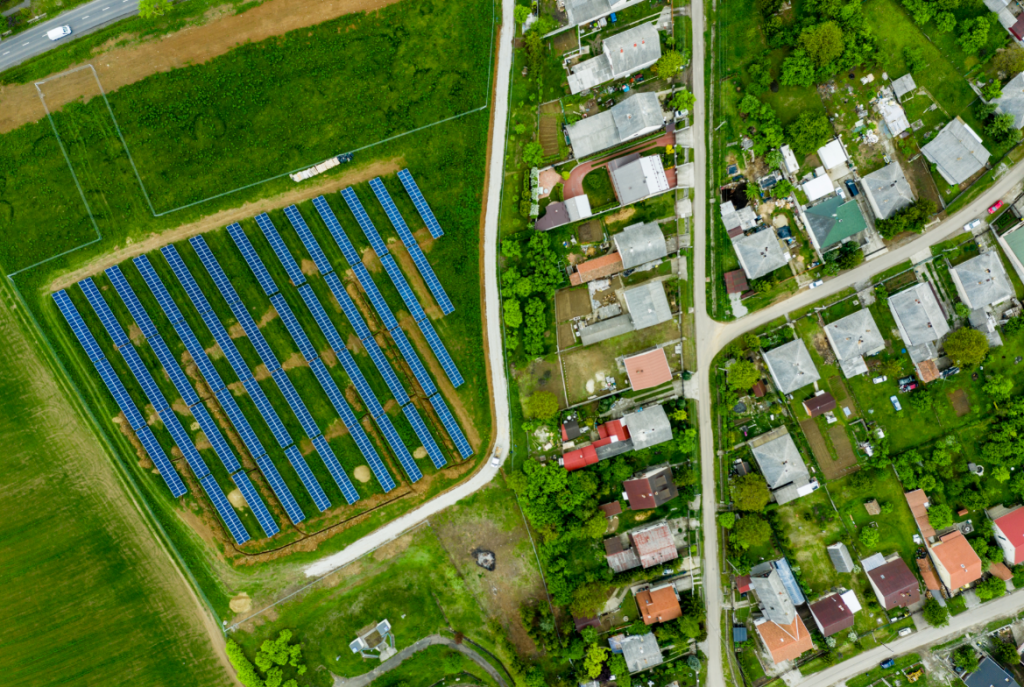Maryland Energy Administration Program Brings Solar Energy to Low and Moderate Income Renters in Marylanders
Yielding a 25% Reduction in Energy Costs for 20 Years

By David Comis, Energy Program Manager
There is now a new option for the low and moderate income (LMI) renters to receive the benefits from solar energy through an initiative called “community solar”. Under the Community Solar Pilot Program (a program overseen by the Maryland Public Service Commission (PSC)), Maryland residents can “subscribe” for solar energy from a “subscriber organization”, and thus receive the benefits of solar energy as if it were on their roof, even though the solar panels may be miles away.
Utility tariffs for the Maryland Community Solar Pilot Program were first approved by the PSC in April 2017. From the start, a number of solar developers set their sights on the construction of projects with the express purpose of providing community solar benefits to the low and moderate income residents of Maryland. Working through problems of zoning, permitting, income validation, and finally COVID, these solar developers, working either as or with subscriber organizations, persisted, and are finally bringing community solar projects on-line.
To date, six projects within the Maryland Energy Administration (MEA) Community Solar LMI-PPA Program have been brought online, resulting in over 14.4 MW of new solar energy since November 2020. Almost 6.1 MW of this energy is dedicated to Low and Moderate Income subscribers. These projects are located in Cecil, Baltimore, Prince George’s and Washington Counties, and support the Delmarva, BGE, and Potomac Edison electrical service territories.
An additional three projects within this pilot program are expected to come online by June 2021. These projects will result in an additional 8.1 MW of solar energy, with 3.5 MW of this energy being dedicated to Low and Moderate Income subscribers. These projects are in Howard, Carroll and Allegany Counties, and will provide energy to the BGE and Potomac Edison service territories.
Assuming each household has signed up for 7 kW of power, this means that about 1,350 LMI households will be receiving low cost power FOR THE NEXT 20 YEARS.
So, what are the real advantages to the LMI subscriber? They are not insignificant. In 2017, the Maryland Energy Administration established a grant program (a monetary incentive) to encourage subscriber organizations to provide three benefits to their LMI subscribers:
- Significant price discounts below the utility’s residential rate (standard offer service);
- Short contract lengths, or at least easy, low cost ways to exit a contract before the end of its term; and,
- Easy validation of income requirements by subscribers.
Each of the three objectives was accomplished. While each project has its own terms and conditions, the average electricity price savings enjoyed by the LMI subscriber of projects receiving the MEA grant is about 25% for each of the 20 years covered by the MEA grant program. Most subscriber organizations allow for month-to-month contracts, or at least a very easy and inexpensive method to break the contract. Finally, the PSC clarified income validation requirements in February 2020, removing uncertainty concerning documentation needed to sign up LMI subscribers.
MEA fiscal year 2022 grants will begin posting in the next few months, check our website to find out more about this program and others or email us to sign-up for the MEA newsletter.

 1-888-373-7888
1-888-373-7888 233733
233733